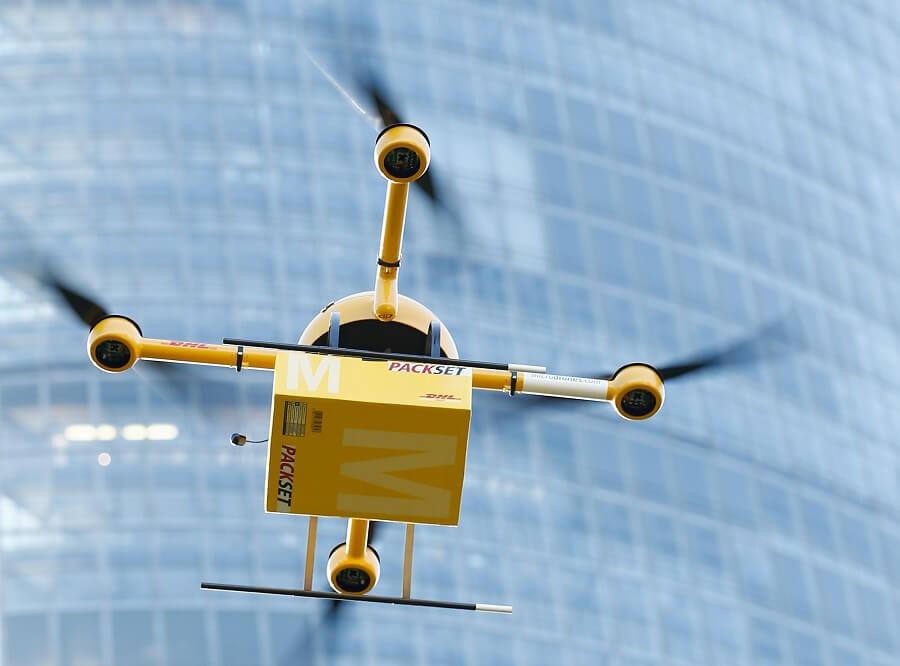It sounds like something outof a sci-fi movie but drones could soon be delivering parcels to our doorsteps.
Since the package delivery industry recovered from the global financial crisis in 2009, it has become a key player in the growth of online salesand the drive towards new technologies. The sector is now looking to drones to deliver packagesthat’ll reach customers within minutes, not days, of ordering a parcel. It’s a multi-billion dollar industry that generates revenues of about $220 billion globally, with the U.S. being the largest market followed by the likes of China, India, Europe and Latin America, according to an analysis published last year by the agency Market Realist. RELATED:Why drive when you can go by drone?
The U.S. courier and parcel delivery services industry alone is made up of about 7,500 companies, which have combined annual revenues of about $90 billion. An analysis by Barclays, a British multinational banking and financial services company, reveals that the online purchasing and delivery markets are growingthanks to the increase in the use of tablet and mobile devices. As a result, retailers are under pressure to both manage their stock and provide efficient delivery in terms of speed, price, service and quality. In 2013, products ordered online made up for just over one billion deliveries andthis number is expected to grow by almost 30 percent by 2018. This rapid growth, fueled by a rise in online sales and customer demand for home deliveries, has forced delivery companies and shopping outlets to find new technologies to improve efficiency. Drones have begun to be considered as an effective option for delivery in urban areas. “Drones will play animportant role in delivery, although they will by no means be the only form of delivery in the future. Drones represent an important tool in the set of options that delivery companies have,” Alexander Stimpson, of the Department of Mechanical Engineering at the Duke University, USA, told Metro. Drones are certainly seen as one of the technologies that will have a key presence in the future of home deliverythanks to their size, their ability to move in airspace without the need for a pilotand especially for their low cost. Recently, Amazon.com Inc. revealed a new prototype and claims it is able to fly distances of up to 24 kilometers and deliver packages within 30 minutes for just one dollar. According to an analysis published by the agency Ark Investment Management, drones are good for both shoppers and stores. Consumers will enjoy low cost and conveniencewhile Amazon stands to make considerable profit. RELATED:Medical robotics: The future of treatment Although drones sound like the ideal solution, these small flying devices still have many hurdles to overcome to become a key part of the delivery industry. The most important challenges facing unmanned aerial vehicles are related to the regulation —theFederal Aviation Administrationeffectively bans commercial drone deliveries, unless it grants an exemption—and technical issues. “Currently drone delivery is very inefficient. Both the payloads that they can carry and the distances they can travel are relatively small. In order to replace road vehicles, it would require a large and constantly maintained fleet,” said Mark Brill, senior lecturer in Future Media at Birmingham City University, UK. Despite the challenges that drones have to overcome, it seems inevitable that they will become a part of everyday life. Experts agree that automation technologies, such as terrestrial robots, drones and automated vehicleswill be key in the future of the delivery industry. With that being said, Logan Campbell, founder of the drone consulting firmAerotas, said, “There will likely still be delivery trucks, ships, and trains for quite a while into the future.”
– By Daniel Casillas
Are drones the future of delivery?

Getty Images


















